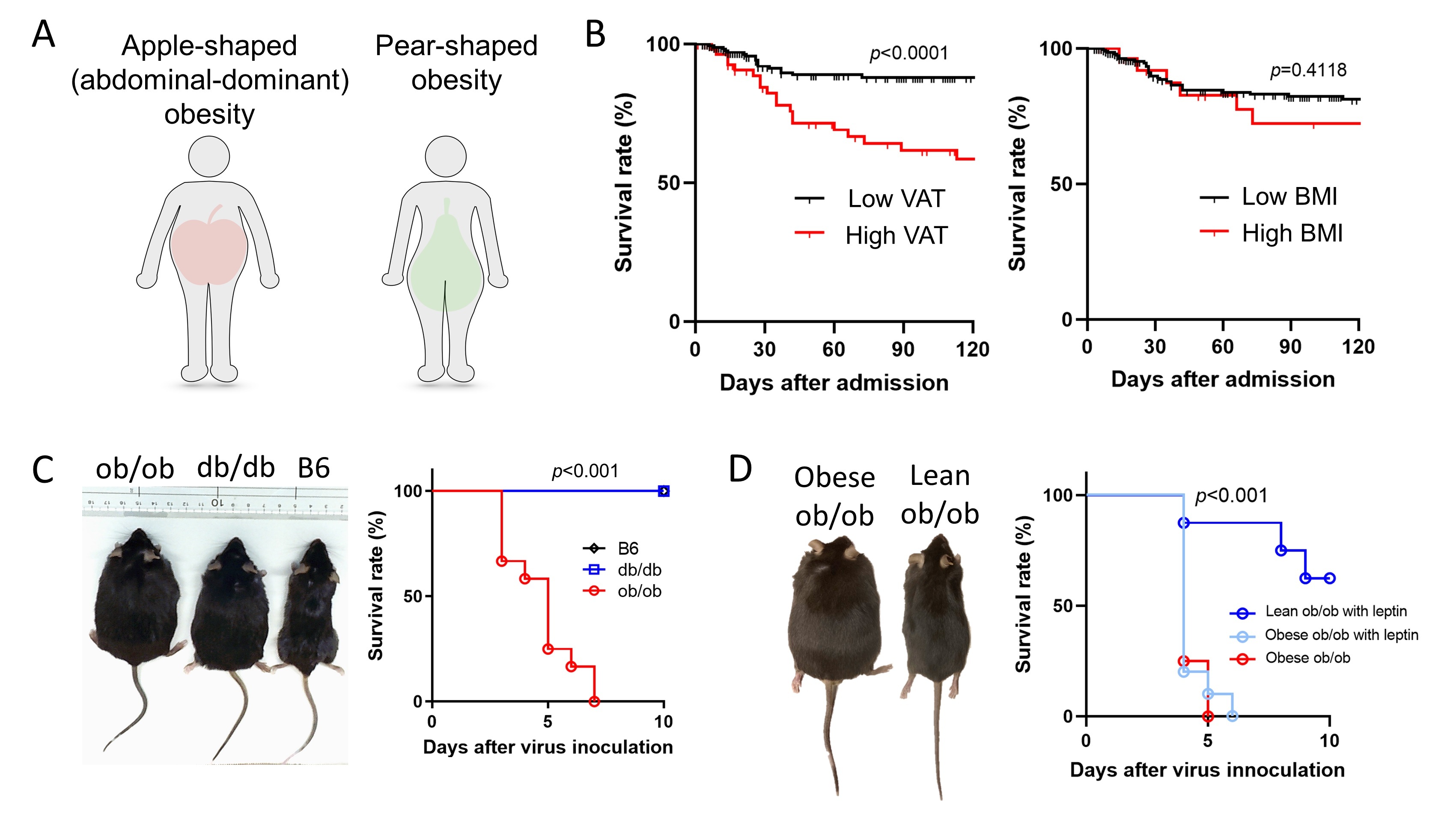When it comes to COVID-19, belly fat upsets the apple cart
In a study published last month in Proceedings of the National Academy of Sciences (PNAS), researchers from Tokyo Medical and Dental University (TMDU) revealed that carrying excess belly fat is related to greater inflammation and mortality in Japanese COVID-19 patients.
Some patients with COVID-19 experience a dangerous event called “cytokine storm,” which involves severe inflammation that dramatically affects breathing and leads to death. Although it is impossible to predict which patients will undergo this event, conditions such as high blood pressure, diabetes, kidney disease, and obesity are known risk factors.
“While treating patients with COVID-19, we noticed that obese patients with predominantly abdominal fat tended to experience more severe disease courses and worse outcomes (A, B),” says one of the lead authors, Tadashi Hosoya. “Therefore, we hypothesized that the accumulation of visceral adipose tissue fueled systemic inflammatory responses in COVID-19 and could be a marker for identifying high-risk patients.”
To test this, the researchers used two types of obese mice: ob/ob mice, which are susceptible to putting on abdominal fat, and db/db mice, which put on fat all over. Leptin signaling, which regulates appetite, is impaired in both types of mice, leading them to become obese from overeating. These two types of obese mice and non-obese control mice were then infected with mouse-adapted SARS-CoV-2, and the researchers monitored the mice for outcomes such as inflammation, lung injury, and death.
“The results were very striking,” explains Shinsuke Yasuda, senior author. “The ob/ob mice all died after infection with SARS-CoV-2, while most of the non-obese control mice and even the obese db/db mice survived (C).”
They noted that ob/ob mice produced more pro-inflammatory factors than db/db mice. Importantly, blocking one in particular, interleukin-6 (IL-6), partially but significantly improved survival rates in these obese mice.
Of note, “lean” ob/ob mice can be generated by giving them a preventive leptin supplement, and they survived SARS-CoV-2 infection more often than their obese counterparts. However, giving the leptin supplement after the mice had already become obese did not help them survive the infection (D).
“Our findings suggest that excessive adipose tissue is related to activation of cytokine storm and delayed elimination of SARS-CoV-2, thus predicting mortality,” says Seiya Oba, lead author.
Overweight contributed more significantly to the COVID-19 mortality in Asian populations than in White populations. This could be explained by apple-shaped obesity being more common in Asian populations.
Given that anti-inflammatory therapies, including IL-6 blockers, are already available, these findings suggest that obese patients with excess belly fat would benefit most from this treatment strategy. By understanding more about COVID-19, patients’ outcome will hopefully improve.

Abdominal-dominant obesity was associated with worse outcomes under SARS-CoV-2 infection
A: Representative images of abdominal-dominant obesity (apple-shaped) and subcutaneous-dominant obesity (pear-shaped).
B: Kaplan–Meier plot of survival rate in COVID-19 patients during hospitalization. BMI; body mass index. VAT; visceral adipose tissue.
C: Representative images of obese and lean mice and survival curve after SARS-CoV-2 inoculation.
D: Representative images of obese ob/ob and lean ob/ob mice and survival curve after SARS-CoV-2 inoculation. Lean ob/ob mice were pre-treated with leptin for six weeks in advance to the infection.
Summary
Journal Article
TITLE:Apple-shaped obesity: a risky soil for cytokine-accelerated severity in COVID-19
DOI:https://doi.org/10.1073/pnas.2300155120
Correspondence to
Shinsuke Yasuda, MD, Ph.D., Professor
Department of Rheumatology,
Graduate School of Medical and Dental Sciences,
Tokyo Medical and Dental University(TMDU)
E-mail:syasuda.rheu(at) tmd.ac.jp
*Please change (at) in e-mail addresses to @ on sending your e-mail to contact personnels.

